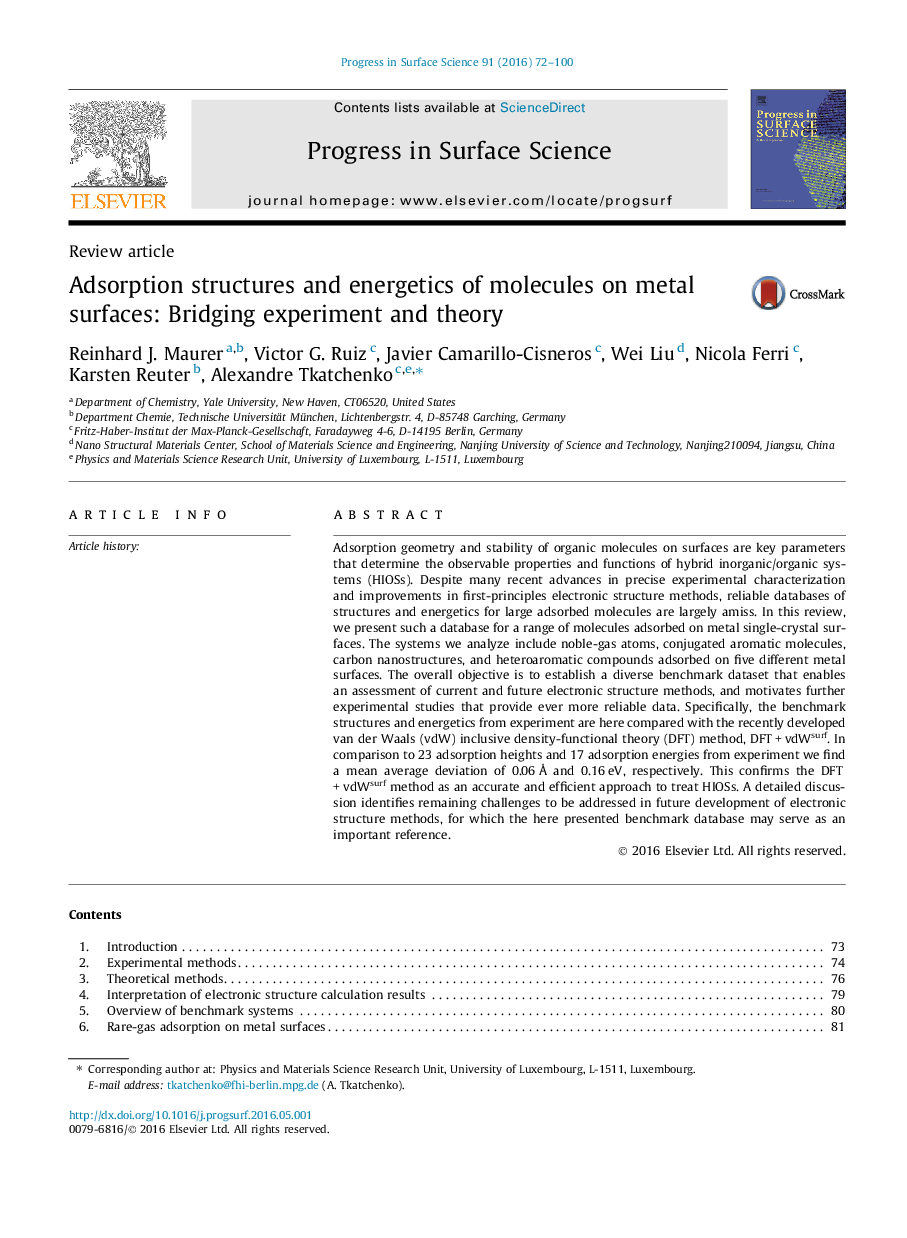| Article ID | Journal | Published Year | Pages | File Type |
|---|---|---|---|---|
| 5419926 | Progress in Surface Science | 2016 | 29 Pages |
Abstract
Adsorption geometry and stability of organic molecules on surfaces are key parameters that determine the observable properties and functions of hybrid inorganic/organic systems (HIOSs). Despite many recent advances in precise experimental characterization and improvements in first-principles electronic structure methods, reliable databases of structures and energetics for large adsorbed molecules are largely amiss. In this review, we present such a database for a range of molecules adsorbed on metal single-crystal surfaces. The systems we analyze include noble-gas atoms, conjugated aromatic molecules, carbon nanostructures, and heteroaromatic compounds adsorbed on five different metal surfaces. The overall objective is to establish a diverse benchmark dataset that enables an assessment of current and future electronic structure methods, and motivates further experimental studies that provide ever more reliable data. Specifically, the benchmark structures and energetics from experiment are here compared with the recently developed van der Waals (vdW) inclusive density-functional theory (DFT) method, DFTÂ +Â vdWsurf. In comparison to 23 adsorption heights and 17 adsorption energies from experiment we find a mean average deviation of 0.06Â Ã
and 0.16Â eV, respectively. This confirms the DFTÂ +Â vdWsurf method as an accurate and efficient approach to treat HIOSs. A detailed discussion identifies remaining challenges to be addressed in future development of electronic structure methods, for which the here presented benchmark database may serve as an important reference.
Related Topics
Physical Sciences and Engineering
Chemistry
Physical and Theoretical Chemistry
Authors
Reinhard J. Maurer, Victor G. Ruiz, Javier Camarillo-Cisneros, Wei Liu, Nicola Ferri, Karsten Reuter, Alexandre Tkatchenko,
